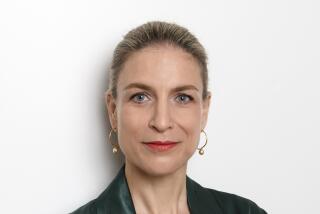MASTERFUL MARKETING OF MUSEUM MEMBERSHIPS
- Share via
Using enterprising marketing techniques to take advantage of its self-proclaimed position as “America’s largest and most original showcase for the art of our time,” the Museum of Contemporary Art will boast a membership of 28,000 when it opens Dec. 10.
MOCA’s director of develop ment, Kerry Buckley, says that when the last responses from its current direct-mail campaign filter in, the museum will rank second among the country’s modern and contemporary art institutions. The New York Museum of Modern Art is first, with a membership of 56,000.
“What MOCA has basically done is taken what most museums take 15 years to do and eclipse it into a period of three years,” Buckley says.
In 1985, the membership of the 53-year-old Museum of Modern Art in San Francisco reached 20,000, while other established modern art museums--such as the Walker Art Center in Minneapolis, the Whitney Museum of American Art in New York and the Museum of Contemporary Art in Chicago-- have much smaller memberships.
MOCA has achieved this position by maintaining a high profile and targeting its membership drive to the baby boomer/yuppie generation, as well as the proven post-50-year-old adult market, museum officials say.
The museum’s marketing campaign has been in motion for three years--since its Temporary Contemporary facility opened in a former city warehouse in Little Tokyo.
The exhibition space in downtown Los Angeles has been the museum’s most visible--and consistent--form of advertising and of attracting members. According to Buckley, between 300 and 400 new members signed on at the site each month in September and October, during the run of “Tokyo: Form and Spirit.” The previous monthly rate was 200 new memberships.
The museum has made its membership attractive by charging a flat $35 membership fee, unlike most museums, which offer a variety of membership options and then increase benefits as the membership fees rise. “The board (of trustees) feels it’s a museum for the people,” Buckley says.
The membership campaign has been aided by a steady stream of publicity and a direct mail campaign targeted at potential members in the greater Los Angeles area. Buckley says she “borrows ideas” from magazine subscription promotions for the direct-mail pieces.
In connection with the opening of its permanent Bunker Hill facility on Grand Avenue, 600,000 direct-mail pieces were distributed in October. Buckley says that 6,000 new memberships have already come in and that another 2,000 are expected.
The anticipated 8,000 new members would be 3,000 more than joined in 1985. The museum’s membership renewal rate also rose to 70% this year from 50% in 1985.
According to consultant Terry Whitney, who helped develop the direct-mail campaign, contemporary art museums traditionally have fewer members than historically oriented museums due to their limited focus. Whitney says MOCA has gained its large membership, in part, because of its marketing skills.
“The direct mail was done right and the institute has what it takes,” Whitney says. “MOCA has a broad appeal--it offers more than contemporary art, it has film, video, architecture . . . It’s easy to market in that sense.”
The recent MOCA mailer encourages members to donate “even more” than its standard membership fee (Buckley says a “large percentage” did) and also allowed for memberships to be charged on credit cards.
According to Buckley, the typical museum member across the country is “50-plus, college-educated, and has a fairly substantial income.” In addition to targeting this established market with its campaign, the museum purchased subscription lists from magazines such as Vanity Fair and Vogue with “young, upwardly mobile” readerships.
Solicitations to these prospects are currently attracting members, according to Buckley, although a thorough demographic study of museum membership has not been conducted.
The museum generates its overall budget exclusively from private sources. Membership fees are expected to account for 12% of the museum’s $6-million operating budget this year.
Buckley admits to concerns about making the museum appear “too commercial” in its marketing ventures. “We’re not in the business of being a commercial institution,” she says. “With museums, it (marketing) has to be done carefully so you don’t lose sight of the purpose of the museum.
“For years, museums were so afraid of commercialization that they didn’t market at all. And now they’ve realized it’s a necessity. If they don’t market and start analyzing who their publics are and marketing to those publics, they’re not going to be around.”
More to Read
The biggest entertainment stories
Get our big stories about Hollywood, film, television, music, arts, culture and more right in your inbox as soon as they publish.
You may occasionally receive promotional content from the Los Angeles Times.










